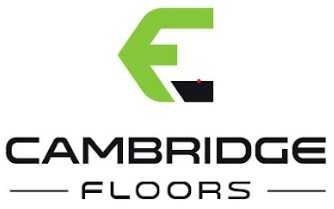What is concrete levelling? And why is it needed?
Concrete levelling requires the use of self-levelling cement, and is done in one day. Once the levelling is complete, then the flooring installation can begin. Concrete levelling requires the use of self-levelling cement, and is done in one day. Once the levelling is complete, then the flooring installation can begin. Remember, installing flooring on a non-level concrete slab voids your floor warranty, so don’t take the risk and call Cambridge Floors!
Our Services Include:
Filling and levelling concrete
Concrete crack filling
Re-levelling uneven concrete
Self-levelling cement
Floor gridding to level out high spots
Polished Concrete: The right mix between utility and luxury
Polished concrete is great for both commercial and residential applications. From a polished salon floor to a modern industrial condo, polished concrete helps creates an effortless chic to a space. Polished surfaces are not new to history, with ancient buildings often floored with marble, granite and other natural stones, but concrete allows an uniform look that doesn't need grout or other break lines to the look. Concrete also provides more durability in comparison to natural stone.
Concrete is not one look however, the concrete substrate can affect the look of the finished result as can the mix design, additives and the location of where you are. It is also important to understand that concrete is a one pour wonder. Not all concrete will not polish or wear the same.
Is polished concrete the right decision for your space?
Given that the concrete substrate will serve as the finished floor, it's essential to take steps to prevent surface staining, damage, and contamination. Construction processes on a substrate designated for a polished concrete finish require special handling compared to other construction settings. Overspray from painting, substances such as drywall mud and mortar, hydraulic oils from equipment, and surface spills can all jeopardize the final outcome. It's crucial to protect the surface against damage or staining.
Insufficient or incorrect floor protection during construction can lead to unevenness in the polished concrete finish. Proper protection is essential when choosing polished concrete as a finished floor system, as it's important to understand the system's benefits and limitations. In general, any space suitable for sealed concrete as a wear surface can benefit from polishing. However, areas exposed to caustic or acidic substances that can damage or etch concrete are not suitable for polished concrete.
Application Process
Polishing concrete involves a series of steps that begin with preparing and pouring the concrete and conclude with the final polish and sealing of the surface. Initially, the process involves selecting the right mix design and additives to achieve the desired finish and performance. After pouring the concrete, it needs to cure for around 28 days, depending on environmental conditions. Once cured, the surface is inspected for imperfections and unevenness, then undergoes initial grinding with a coarse-grit diamond grinder to remove coatings and smooth out the surface. Dust control measures are taken throughout this phase. Progressively finer grits are used to refine the surface, leading to honing with even finer grits to increase smoothness and prepare the surface for polishing. Next, a chemical densifier, such as lithium, potassium, or sodium silicate, is applied to strengthen and harden the concrete while reducing dust. The densifier penetrates the surface and is then scrubbed and cleaned off. Polishing follows, starting with fine-grit polishing pads and working through progressively finer grits to achieve the desired gloss and shine. The process includes buffing and refining until the specified finish level is reached. The final steps involve thoroughly cleaning the polished surface to remove any debris and applying a sealer to protect the floor from stains and enhance its appearance. The sealer is left to cure according to the manufacturer's recommendations before allowing traffic on the floor. Proper maintenance, such as regular cleaning with non-abrasive cleaners and occasional buffing and re-polishing, helps preserve the polished concrete's beauty and performance over time.
Benefits and Limitations
Every type of flooring system has specific needs for proper installation. It's crucial to follow the manufacturer's written guidelines to ensure a successful installation. Adhering to these instructions is key for preserving the manufacturer's warranty, as ignoring them can lead to the warranty being voided. Quality installation relies on proper product selection based on the intended use, coordination with other trades, compliance with product moisture requirements, and adherence to the industry's Best Practice methods.
One of the major advantages of polished concrete is its low maintenance, as it does not require sealing, waxing, or refinishing. Polished concrete is used in a variety of settings, from functional utility areas to sophisticated interior spaces. However, it is generally not suitable for environments exposed to harsh chemicals, acids, or other corrosive substances that can damage or contaminate the concrete. Always consult with the system manufacturer to confirm the suitability of polished concrete for a specific project.
Maintenance
Proper maintenance is essential for the long-term health of all types of flooring. Every surface requires regular cleaning and upkeep to stay in optimal condition. In a typical business setting, floors endure significant wear and tear. Maintaining them in good shape demands some planning and consistent effort. The first step is to minimize the amount of dirt, debris, and other potential damaging agents that enter the space. Interior and exterior walk-off mats can help reduce the amount of sand, water, and other foreign matter brought onto the floor, simplifying maintenance.
Polished concrete has specific maintenance needs. Many manufacturers offer methods that utilize diamond-impregnated cleaning and buffing pads in combination with floor scrubbing equipment. These techniques enable ongoing re-polishing during routine cleaning, helping to sustain the surface's gloss and finish.







